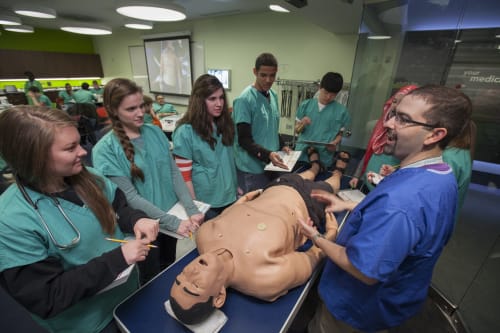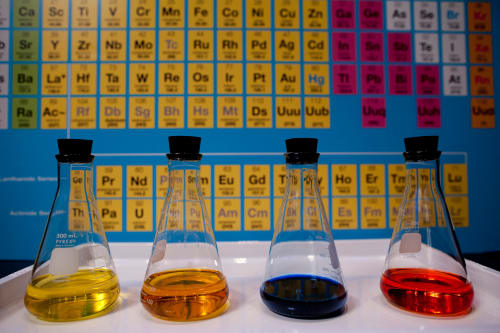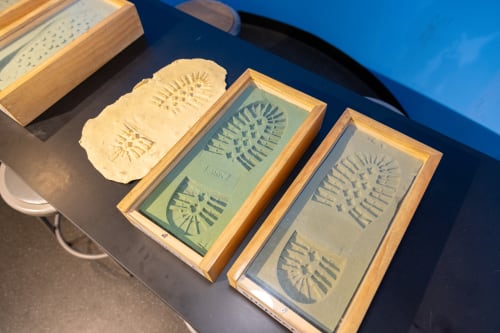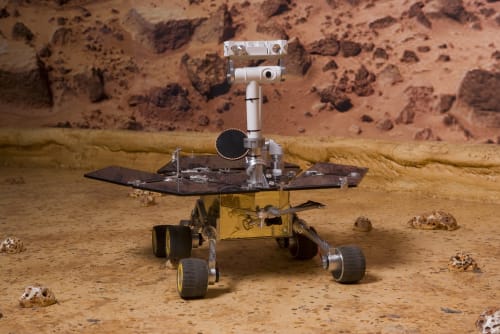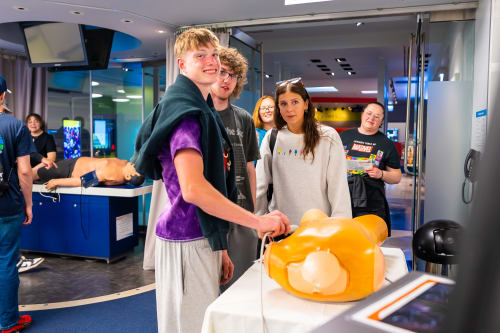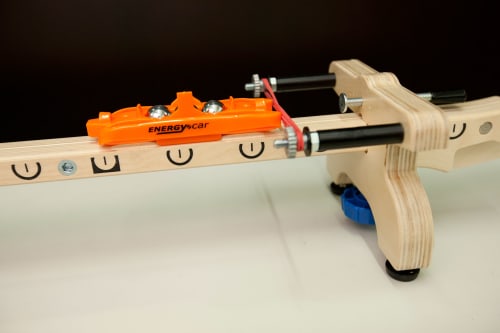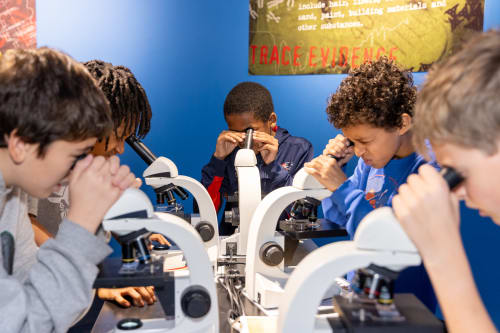Complete authentic medical tests using professional lab tools and work hands-on with a state-of-the-art human patient simulation robot to diagnose and understand diabetes.
MedLab: Diabetes
For Grades 7-12
- Location: Griffin MSI
- Capacity: 30 students
- Duration: 45 minutes
- Cost: $240
- Offered Tuesday and Thursday at 10:15 and 11:45 a.m.
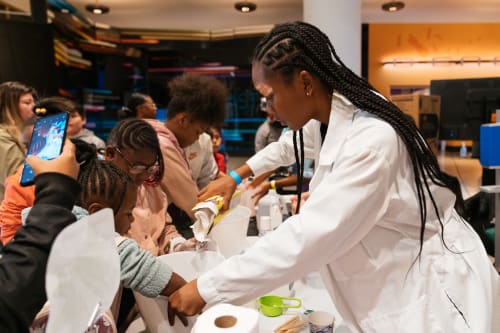
Lab goals
During every session we aim to have students reach understanding and have fun along the way!
Student outcomes
- Gain a greater understanding of medicine, physiology and anatomy.
- Learn how personal choices impact community health issues.
- Gain a greater understanding of, and increased interest in, a range of health and science careers that impact community and individual health.
- Feel empowered to take initiative in improving personal, family and/or community health.
- Actively engage in inquiry-based, hands-on science investigation.
- Work collaboratively with peers.
- Communicate using terminology/vocabulary accurately.
- Analyze test results, develop a diagnosis and suggest treatment for illness.
Explore career pathways
Classroom connections
All of our Learning Labs are designed to integrate curriculum standards and connections into your classroom!
Skyline Scope & Sequence
- 7th: Chemical Reactions; Populations & Ecosystems
- 8th: Natural Selection
- HS Biology: Unit 1; Unit 2; Unit 3
- 8th: Light Waves
Common Core ELA/Literacy Standards
- CCSS.ELA-LITERACY.RI.3.1, 3.3, 3.7, 3.10
- CCSS.ELA-LITERACY.RI.4.1, 4.2, 4.3, 4.4, 4.7, 4.10
- CCSS.ELA-LITERACY.RI.5.1, 5.2, 5.4, 5.7, 5.10
Next Generation Science Standards
All of our Learning Labs are designed to integrate curriculum standards and connections into your classroom!
Science and Engineering Practices:
- Asking questions and defining problems
- Developing and using models
- Planning and carrying out investigations
- Analyzing and interpreting data
- Using mathematics and computational thinking
- Constructing explanations and designing solutions
- Engaging in argument from evidence
- Obtaining, evaluating and communicating information
Crosscutting Concepts
- Patterns
- Cause and effect
- Structure and function
- Systems and system models
- Stability and change
Disciplinary Core Ideas
- Middle School LS 1: From Molecules to Organisms: Structures and Processes
- Middle School LS1.A: Structure and Function
- Middle School LS1.B: Growth and Development of Organisms
- Middle School ETS2: Links among engineering, technology science and society
- High School LS 1: From Molecules to Organisms: Structures and Processes
- High School LS1.A: Structure and Function
- High School LS 3: Heredity: inheritance and variation of traits
- High School ETS2: Links among engineering, technology science and society
Extend learning with these resources
Activities
- Participate in a classroom enactment of glucose homeostasis in the body and learn the effects of diabetes on glucose regulation.Diabetes (ZIP)
- Calculate and visualize the amount of carbohydrates, proteins and fats that are in their foods and learn how to interpret a nutrition label.Nutrition (Zip)
- Become familiar with the field of health science by participating in six hands-on vital sign activities and apply what you learn to complete a patient diagnosis.Vital Signs (zip)
Additional resources
Sponsors

